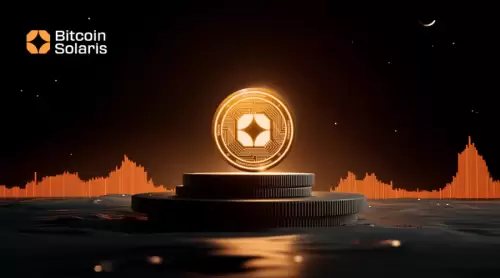 |
|
 |
|
 |
|
 |
|
 |
|
 |
|
 |
|
 |
|
 |
|
 |
|
 |
|
 |
|
 |
|
 |
|
 |
|
Cryptocurrency News Articles
On-chain data suggests Bitcoin may encounter low resistance at $100,000 and beyond
May 09, 2025 at 01:00 pm
Strict editorial policy that focuses on accuracy, relevance, and impartiality

On-chain data suggests Bitcoin may encounter low resistance at $100,000 and beyond, at least from the perspective of investor cost basis distribution.
A Low Amount Of Bitcoin Supply Has Cost Basis At Levels AheadIn a new post by institutional DeFi solutions provider Sentora (formerly IntoTheBlock), the various Bitcoin price ranges are discussed in terms of where investor cost bases fall as BTC approaches the $100,000 mark.
The related data for the price ranges is shown in the chart below:
In the graph, the size of the dot corresponds to the amount of the Bitcoin supply that investors last purchased inside the associated price range. It would appear that all of the large dots are below the spot price following the latest rally, meaning that the levels that saw the most demand are now in the green.
It’s also evident that the ranges ahead (that is, those harboring the cost basis of underwater holders) have only small dots associated with them. In total, less than 3% of the cryptocurrency’s supply has its cost basis at these levels that lie above the spot price.
To any investor, their cost basis is an important level, so they may be more likely to show some kind of move when a retest of it happens. Generally, holders who were in the loss prior to this retest might incline toward reacting to it by selling their coins. This is because these investors may fear going back into loss again.
Similarly, the profit investors could decide to buy more during a retesting of their acquisition mark, believing that the same level might end up being profitable again in the future.
These buying and selling behaviors are naturally of no consequence to Bitcoin when only a few investors are displaying them. Tight price ranges where a large amount of investors share their cost basis, however, can produce a reaction sizable enough to affect the asset.
Clearly, Bitcoin only has such ranges left on the profit side, implying it has no major resistance levels ahead in terms of supply distribution. Thus, an exploration beyond $100,000 may not be hindered by break-even sellers.
Though, while this may true, the run could have something different to worry about: profit-selling. Usually, the more investors there are in gains, the more likely is a mass selloff to occur.
With the vast majority of the Bitcoin supply now in the green, it’s possible that profit-taking would become a threat to the rally. It only remains to be seen whether there would be enough incoming demand able to soak up the potential selling pressure or not.
BTC Price
At the time of writing, Bitcoin is trading around $99,400, up more than 3% in the last week.
Disclaimer:info@kdj.com
The information provided is not trading advice. kdj.com does not assume any responsibility for any investments made based on the information provided in this article. Cryptocurrencies are highly volatile and it is highly recommended that you invest with caution after thorough research!
If you believe that the content used on this website infringes your copyright, please contact us immediately (info@kdj.com) and we will delete it promptly.
-

-

-

-

-

-

- IOTA Rebased mainnet is now live, signaling a major leap forward in the protocol’s development.
- May 09, 2025 at 08:15 pm
- The upgrade introduces a high-throughput network exceeding 50,000 transactions per second. It is integrated with delegated proof-of-stake and robust smart contract capabilities via MoveVM and EVM.
-

-

- Bitcoin Solaris (BTC-S) Offers Hard-Capped Digital Scarcity and Modernized Bitcoin (BTC) Functionality
- May 09, 2025 at 08:10 pm
- Dogecoin's inflation rate dilutes long-term value, no matter how strong its brand. In contrast, Bitcoin Solaris is capped at 21 million BTC-S, aligning with Bitcoin's model of hard digital scarcity.
-



























































